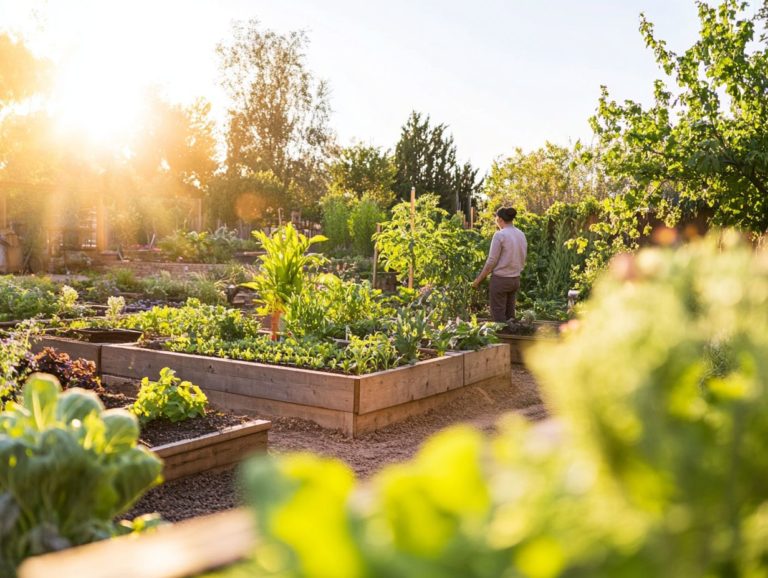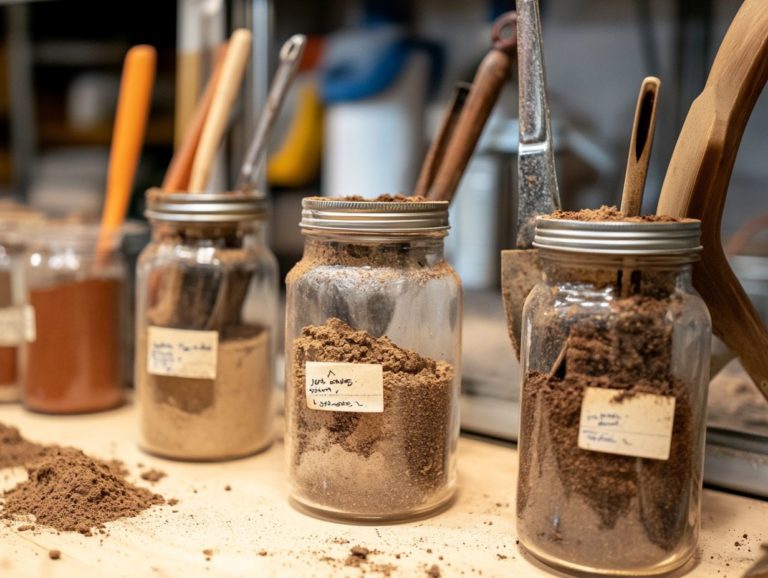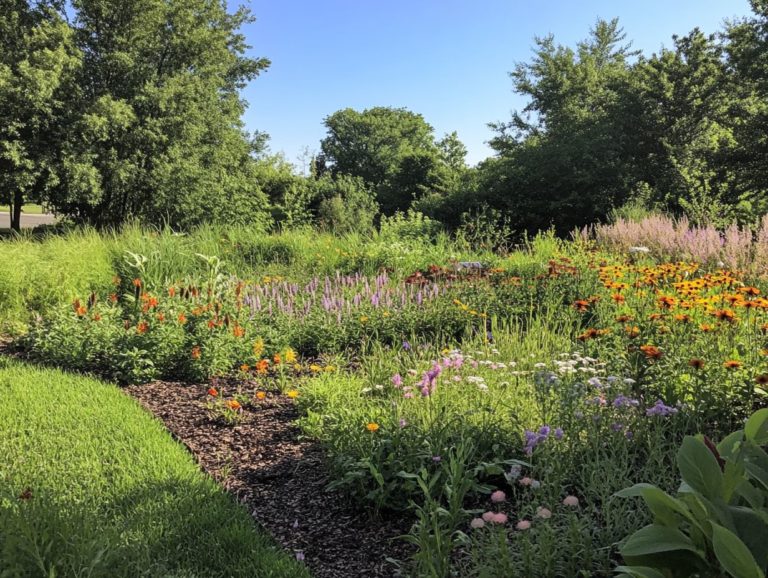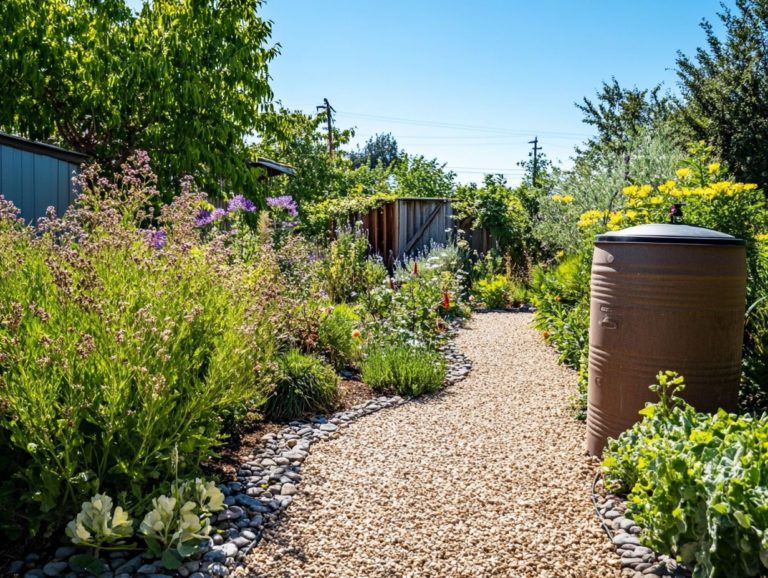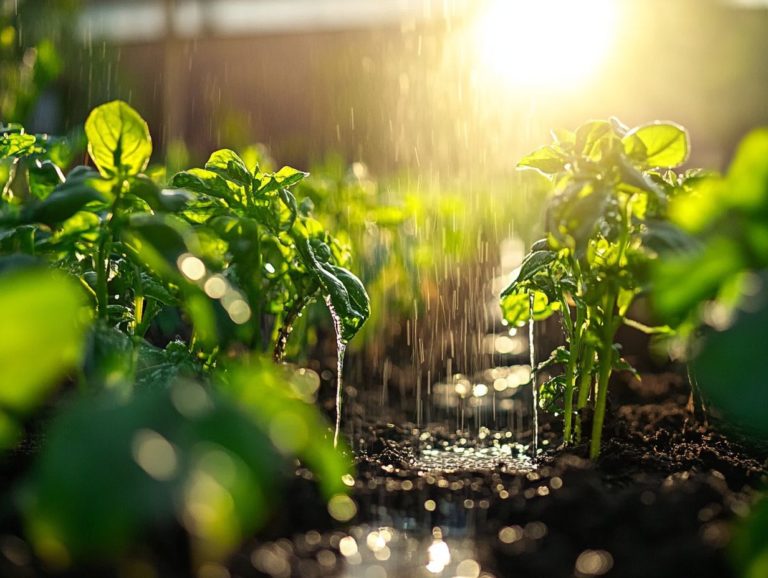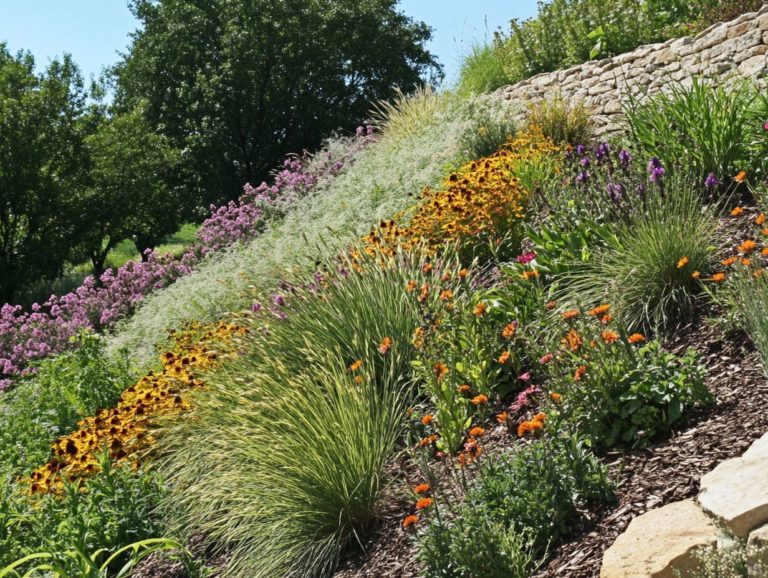7 Signs Your Soil Needs Better Water Conservation
Are you noticing your plants struggling to thrive, or does your garden feel more like a barren desert?
If you find yourself watering more often or seeing dry, cracked soil, it might be the perfect moment to reassess your water conservation practices.
This article delves into seven key signs indicating your soil could benefit from enhanced moisture retention. You ll also discover the significance of water conservation for maintaining healthy soil, effective methods to improve it, and common pitfalls to steer clear of.
Continue reading to ensure your plants receive the care they deserve and watch your garden flourish!
Contents
- Key Takeaways:
- 1. Your Plants Are Wilting or Dying
- 2. Your Soil Is Dry and Cracked
- 3. You See Water Runoff or Puddles on the Surface
- 4. Your Water Bill Is Higher Than Usual
- 5. Your Plants Are Growing Slowly or Not at All
- 6. You Have to Water More Frequently
- 7. Your Soil Is Difficult to Dig or Work With
- What Is Water Conservation and Why Is It Important for Soil?
- What Are the Different Methods of Water Conservation for Soil?
- What Are the Benefits of Improving Water Conservation in Soil?
- How Can a Homeowner Determine If Their Soil Needs Better Water Conservation?
- What Are the Common Mistakes People Make When Trying to Conserve Water in Soil?
- How Can One Improve Water Conservation in Their Soil?
- Frequently Asked Questions
Key Takeaways:
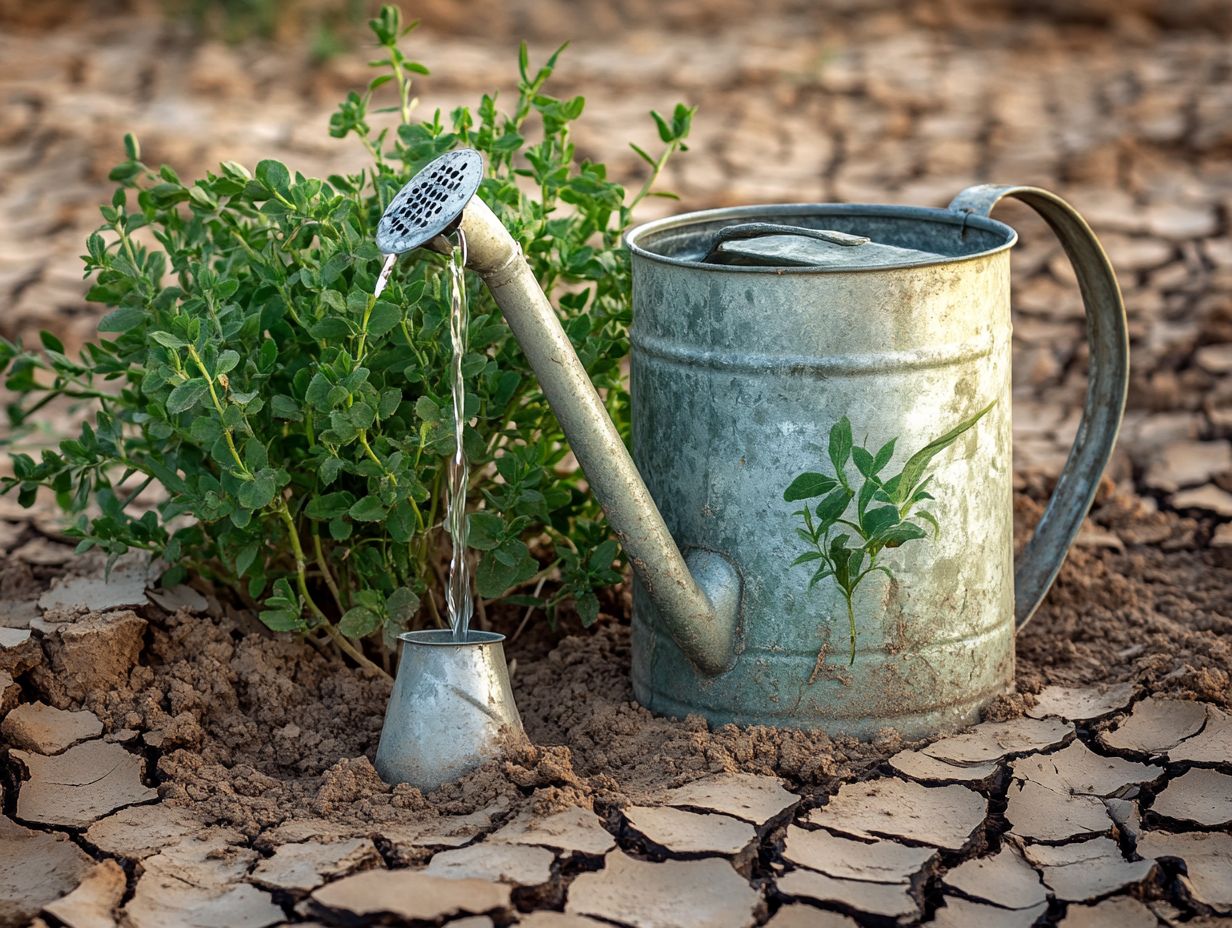
- Wilting or dying plants may indicate poor water conservation in your soil.
- Dry, cracked soil and surface water runoff are other signs of inadequate water conservation.
- Higher water bills, slow plant growth, and difficulty digging in soil suggest a need for better conservation efforts.
1. Your Plants Are Wilting or Dying
When you notice your plants wilting or dying, it often signals a critical issue tied to water conservation, soil health, and the overall gardening practices you have in place. This can significantly impact the vibrancy of your garden and the well-being of your plants.
Common culprits of wilting include insufficient irrigation and inadequate soil moisture, especially during drought conditions. To address these challenges, it’s essential for you to embrace water-saving techniques. Consider implementing drip irrigation systems or using mulch to retain that precious soil moisture.
Incorporating drought-resistant plants can tremendously bolster your garden’s resilience during dry spells.
Adding organic matter, like compost, not only nourishes the soil but also enhances its structure. This helps retain moisture more efficiently. By focusing on these factors, you can cultivate a thriving environment that supports robust plant growth, even in the face of adversity.
2. Your Soil Is Dry and Cracked
If you notice your soil is dry and cracked, it s a clear indication that moisture levels are very low. This shows it’s time to act! You must implement effective water retention strategies and take care of your soil to foster sustainable gardening practices and promote plant growth.
The consequences of such dryness can be significant. Insufficient moisture can impair a plant’s ability to absorb essential nutrients, which ultimately hinders its overall vitality.
Different soil types play unique roles in moisture retention. For instance, sandy soils drain quickly and often struggle to hold onto moisture, while clay soils can become compacted, making water infiltration a challenge. Ideally, loamy soils strike a perfect balance, providing a nurturing environment with moderate moisture retention.
To enhance moisture levels in these various soil types, consider incorporating compost and organic matter. These additions can dramatically improve soil structure and water-holding capacity, ensuring your plants flourish even in less-than-ideal conditions.
3. You See Water Runoff or Puddles on the Surface
Noticing water runoff or puddles on your garden’s surface signals inefficiencies in your irrigation practices. This inefficiency can create a wasteful cycle of water usage that detrimentally affects soil moisture and plant health.
Common culprits behind this issue often include overwatering, where excess moisture surpasses the soil s ability to absorb, and poor soil structure that impedes drainage and aeration. To address these challenges, it s crucial to embrace water-saving techniques. Consider implementing drip irrigation systems that deliver moisture right to the roots, effectively minimizing evaporation.
You might also explore xeriscape practices, which highlight drought-tolerant plants and native vegetation, as a means to conserve water. Improving soil health with organic compost and mulch can enhance its ability to retain moisture, reducing runoff and fostering a more vibrant, productive garden.
Don t wait any longer! Start today and transform your garden into a lush paradise!
4. Your Water Bill Is Higher Than Usual
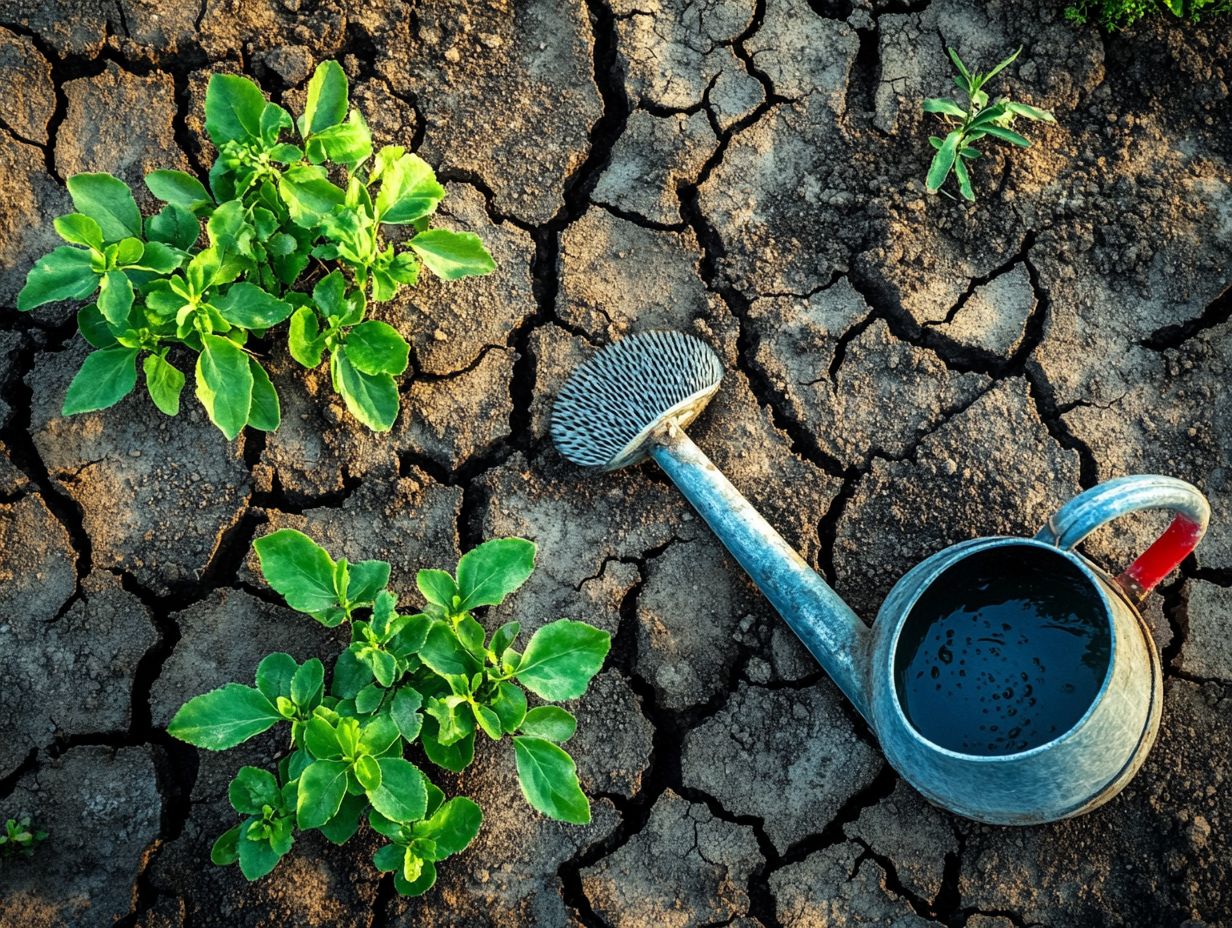
A sudden spike in your water bill can prompt you to reevaluate your outdoor watering practices. Embrace efficient irrigation techniques that prioritize water conservation and reduce overall usage.
This situation highlights the need to scrutinize existing habits that may lead to unnecessary water wastage. By considering alternatives, you can tackle mounting costs while also helping environmental sustainability.
For example, methods like recycling water from daily activities or installing rain barrels can capture rainwater for your irrigation needs. These eco-friendly solutions lower water bills and create a healthier ecosystem by reducing strain on municipal water sources while encouraging smarter gardening practices.
5. Your Plants Are Growing Slowly or Not at All
Slow or stagnant plant growth may signal issues with soil moisture, nutrient availability, and drought stress. These factors are crucial for the health of your garden and its plants.
Several factors contribute to these challenges. The type of soil you have can either enhance or hinder drainage and nutrient retention. Nutrient deficiencies, often found in depleted or poorly structured soils, can cause yellowing leaves or stunted growth.
To address these challenges, incorporate organic matter, like compost, into your soil. This enhances texture and structure while supplying essential nutrients, creating an environment where plants thrive.
Understanding the connection between soil health and plant vitality is vital for cultivating a flourishing garden.
6. You Have to Water More Frequently
If you find yourself watering your garden more often than desired, it could indicate imbalanced soil moisture levels. This urges you to adopt efficient watering practices for sustainable gardening.
Factors influencing this increased watering demand include the type of soil you have. For instance, sandy soils drain quickly, requiring more frequent irrigation, while clay or loamy soils hold water longer.
To combat rapid evaporation and conserve water, use strategies like deep watering. This allows water to penetrate the soil more deeply, promoting stronger root growth. Opting for drought-resistant plants can also significantly reduce water usage while maintaining a lush and vibrant garden.
7. Your Soil Is Difficult to Dig or Work With
Difficulties in digging or working with soil can indicate poor soil health, often worsened by compaction (when soil particles press together, making it hard for roots to grow), lack of organic matter, and rampant weed growth.
To make planting easier, understand how soil structure affects your garden s productivity. Enrich your soil with compost and organic matter to improve its texture and aeration, making tilling much easier.
This creates a healthy environment for your plants, making nutrients readily available while keeping weeds at bay. A balanced gardening space fosters healthy plant development and minimizes labor in the long run.
What Is Water Conservation and Why Is It Important for Soil?
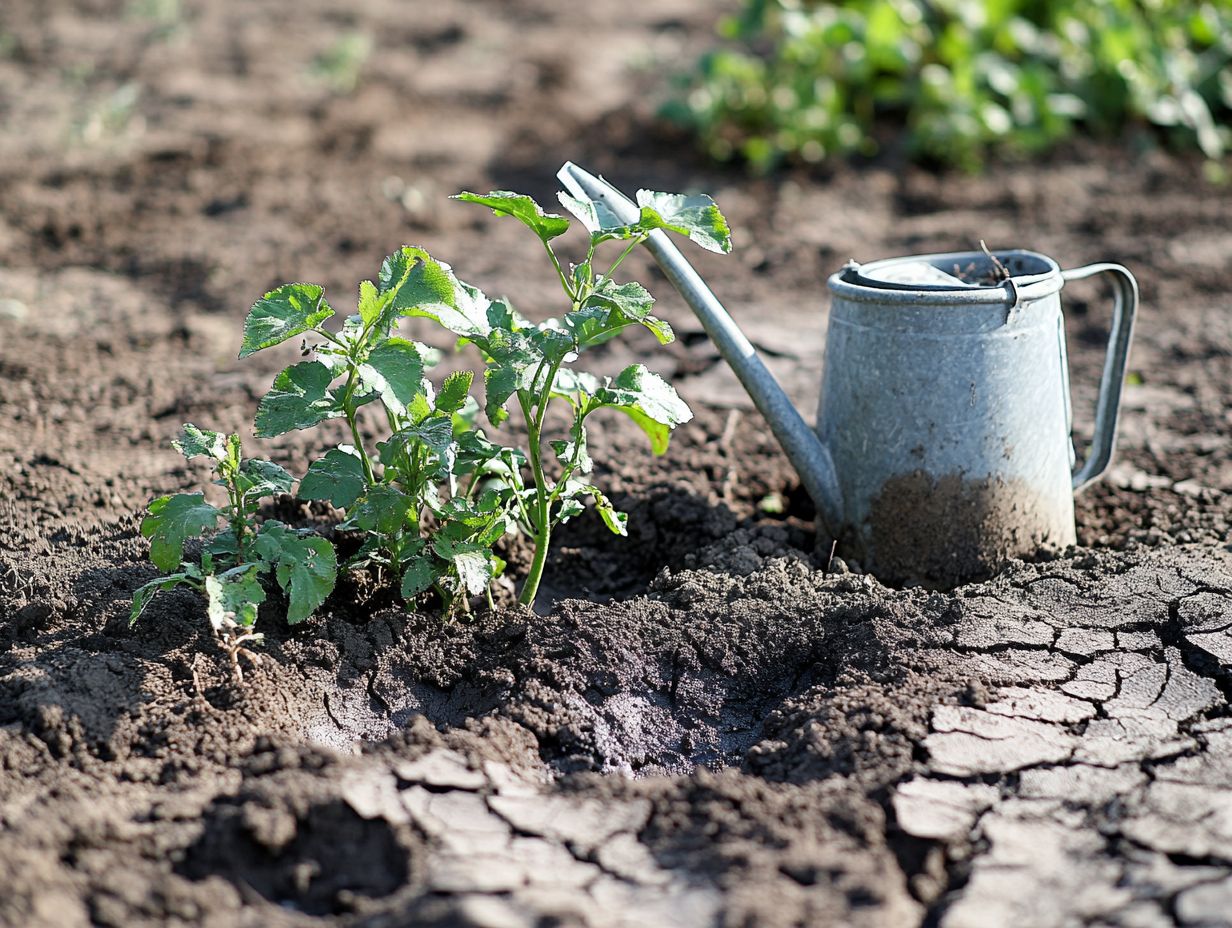
Water conservation is all about managing your water resources responsibly. It ensures that you use them efficiently and preserve them for future generations. This is especially vital for maintaining soil health.
Adopting sustainable gardening practices promotes environmental awareness and resilience against drought. Techniques like mulching, drip irrigation, and selecting native plants can significantly boost the soil’s ability to retain moisture and nutrients.
These methods cut down on excessive watering and improve soil structure. Improved structure helps the soil absorb rainwater and support vibrant plant growth.
Conserving water also plays a key role in preventing soil erosion and degradation, harmful to long-term agricultural productivity.
These sustainable gardening practices contribute to a healthier ecosystem. They foster biodiversity and help ensure our precious water resources are preserved for future generations.
What Are the Different Methods of Water Conservation for Soil?
There are various methods of water conservation for your soil. Each method enhances moisture retention and promotes efficient irrigation practices, fostering a healthier and more sustainable garden environment.
For instance, consider mulching spreading organic materials like straw or wood chips around your plants. This practice not only suppresses weeds but also slows down evaporation, keeping the soil consistently moist.
Then there’s deep watering, which encourages deeper root growth. This method promotes water absorption into the soil, ensuring your plants become less reliant on frequent surface watering.
Utilizing rain barrels is another excellent strategy. They capture and store rainwater, providing a natural hydration source that s easily accessible during dry spells. When combined, these techniques create a robust ecosystem that supports plant vitality while minimizing water usage.
What Are the Benefits of Improving Water Conservation in Soil?
Improving water conservation in your soil offers a wealth of benefits. These include enhanced soil health, improved nutrient availability, and increased resilience against drought key elements for cultivating a thriving, sustainable landscape.
When you effectively retain and manage water, your plants will thrive. Their roots gain easier access to moisture and nutrients, resulting in lush gardens while reducing your reliance on supplemental watering.
A well-hydrated ecosystem encourages beneficial microorganisms that enrich the soil further. This enhances its capacity to support a diverse array of plant life.
Over time, these practices cultivate a more balanced environment, allowing your gardens to flourish. At the same time, they protect water sources and promote biodiversity.
How Can a Homeowner Determine If Their Soil Needs Better Water Conservation?
Assessing whether your soil requires improved water conservation involves several key indicators. Look for soil moisture levels, plant responses, and overall soil health. These factors offer invaluable insights into effective plant care.
By routinely checking the moisture content, you gain a clearer understanding of whether your plants are receiving adequate hydration or if changes are needed. Signs of stress in your plants like wilting or discolored foliage can point to underlying soil issues.
Conducting periodic soil tests can uncover nutrient deficiencies that might necessitate amendments or modifications in your watering techniques. Embracing these straightforward practices enhances the vitality of your garden.
These efforts also promote more sustainable water usage and foster healthier soil over time.
Act now to boost your garden s health! Start implementing these water conservation techniques today to transform your garden!
What Are the Common Mistakes People Make When Trying to Conserve Water in Soil?
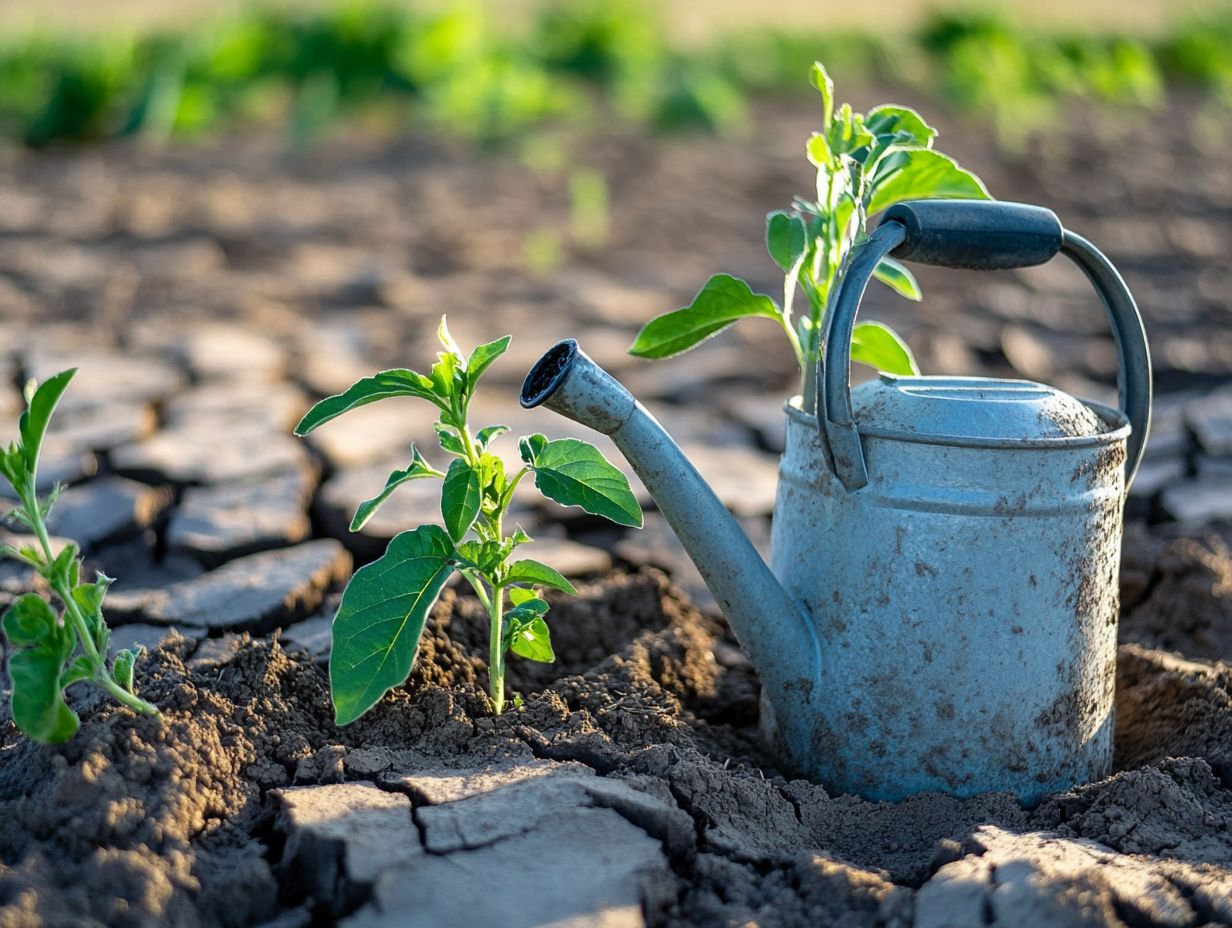
Many people fall into common traps when trying to conserve water in soil. These often lead to ineffective methods that can worsen issues related to soil health and plant growth.
Overwatering is a frequent misstep that can suffocate roots and encourage fungal diseases. This creates a double bind for plant vitality. Improper irrigation scheduling may cause water scarcity or excess. Your plants might find themselves deprived during critical growth phases or drowning in overly saturated soil.
To navigate these challenges, assess soil moisture levels regularly. Invest in irrigation systems that emphasize efficiency. Improving soil health with natural materials added to soil can significantly boost its water retention capacity, fostering a more sustainable approach to water conservation while promoting vigorous plant growth.
How Can One Improve Water Conservation in Their Soil?
Improving water conservation in your soil involves integrating various practices that work together. Adding organic matter, using mulch, and fine-tuning your watering times can enhance moisture retention essential elements for cultivating a sustainable garden.
You can implement these strategies to significantly reduce your water usage while nurturing healthier plants. Incorporating organic amendments like compost or well-rotted manure enriches your soil, enabling it to hold moisture more effectively. Layering organic mulch around your plants not only looks nice; it insulates the soil and minimizes evaporation, making a world of difference.
Establish an optimal watering schedule, preferably early in the morning or late in the evening. This ensures that water penetrates deeply rather than evaporating in the midday sun. This approach leads to more efficient water use and supports a thriving garden ecosystem.
Frequently Asked Questions
What are the signs that my soil needs better water conservation?
- Wilting plants: Notice droopy and wilted plants even after regular watering? It could signify poor water retention in your soil.
- Standing water or flooding: If water pools or doesn t drain properly, your soil may not be absorbing it efficiently.
- Dry, cracked soil: Observe dry, cracked soil? It means water is evaporating quickly and not being retained.
- Slow plant growth: Noticing your plants aren t growing as quickly? It could be due to a lack of water and nutrients.
- High water bills: A sudden increase in your water bills might indicate your soil isn t retaining water well.
- Visible salt deposits: If you see white or gray crust on your soil, it might signify high salt content, hindering water retention.
How can I improve water conservation in my soil?
- Add organic matter: Incorporate compost or mulch into your soil to improve its ability to retain water.
- Use drought-resistant plants: Choose plants suited to dry conditions that require less watering.
- Avoid overwatering: Water deeply and infrequently to encourage deeper root growth and better water retention.
- Use a rain barrel: Collecting rainwater can reduce water usage and conserve it for your garden.
- Use a drip irrigation system: Drip irrigation delivers water directly to plant roots, reducing waste and promoting absorption.
- Mulch regularly: Mulching retains moisture in the soil and reduces evaporation.
Take action now! Implement these water conservation methods today to maximize your garden’s health.
What are the benefits of better water conservation in soil?
1. Save water and money! Improve water conservation in your soil to cut down on water usage and lower your bills.
2. Enjoy healthier plants. Keeping the right moisture levels helps plants grow stronger, enhancing their productivity.
3. Reduce erosion easily. Well-watered soil is less prone to erosion, which protects your plants and keeps nutrients where they belong.
4. Save time and effort. With efficient water holding in your soil, you’ll spend less time watering your plants and more time enjoying your garden.
5. Help the environment. Conserving water not only benefits your garden but also protects this vital resource for future generations.

